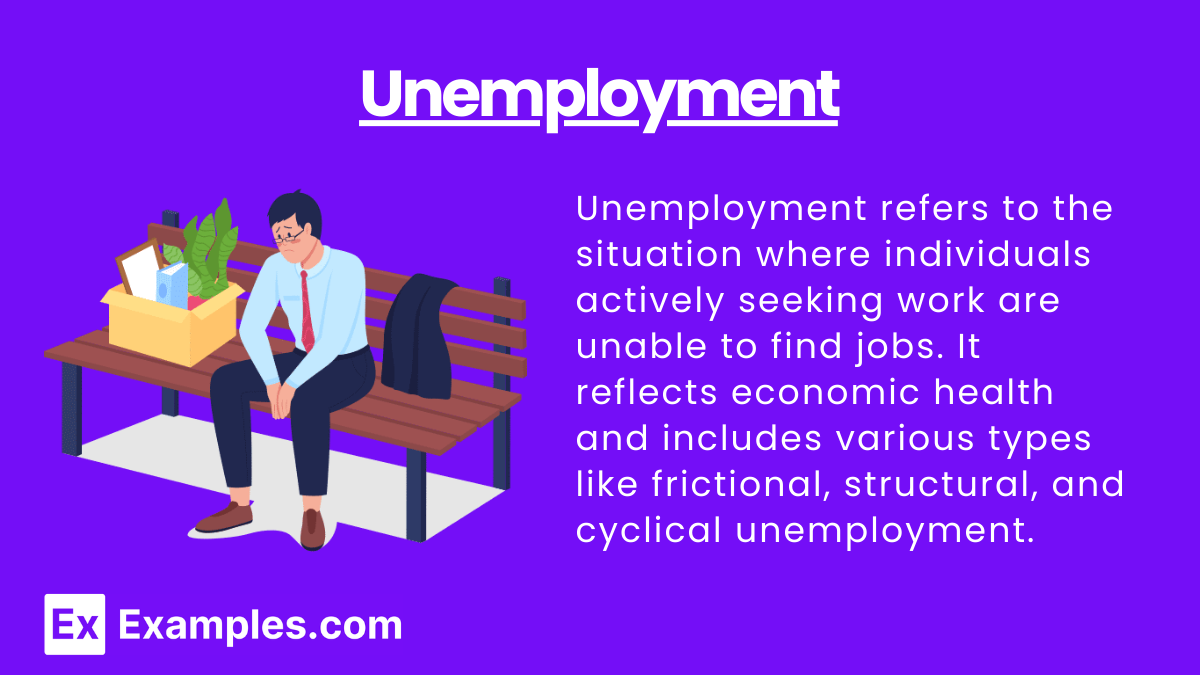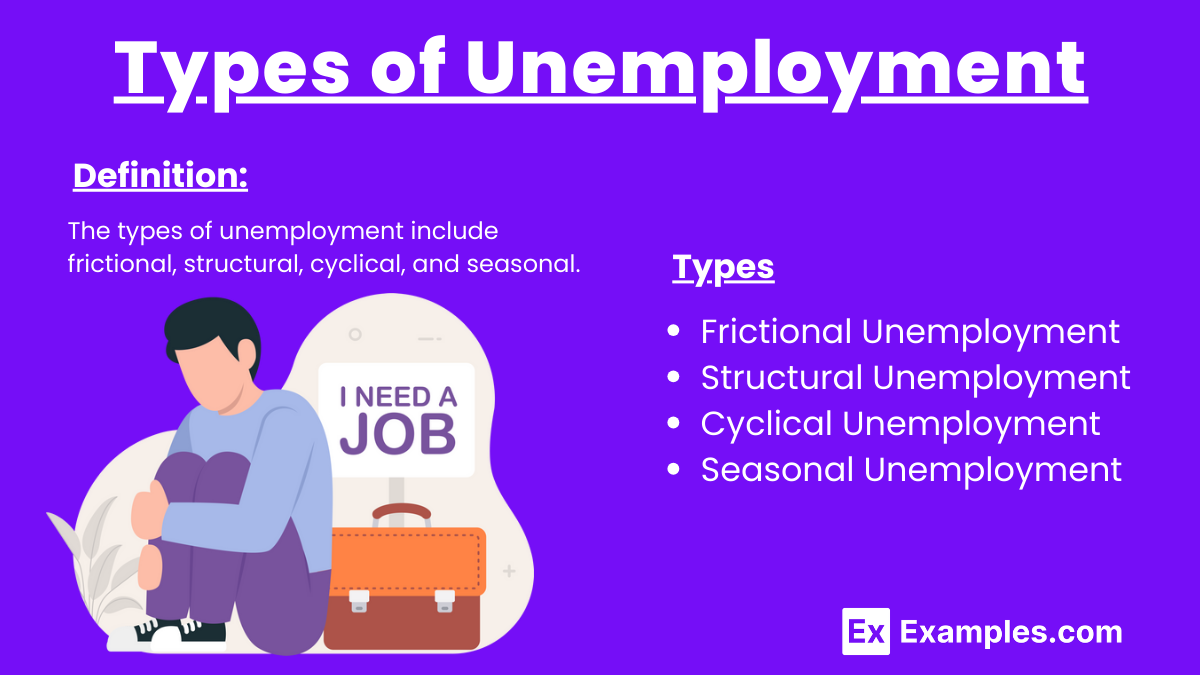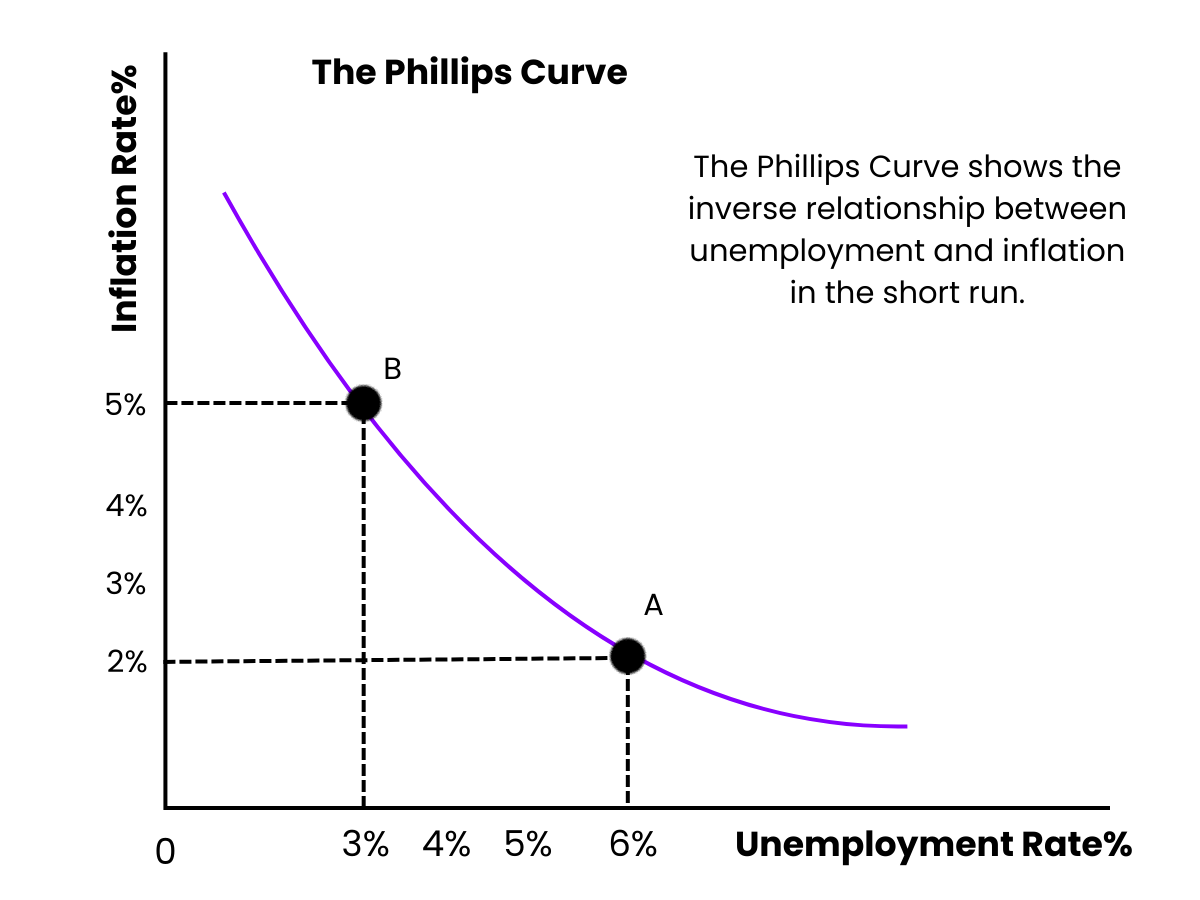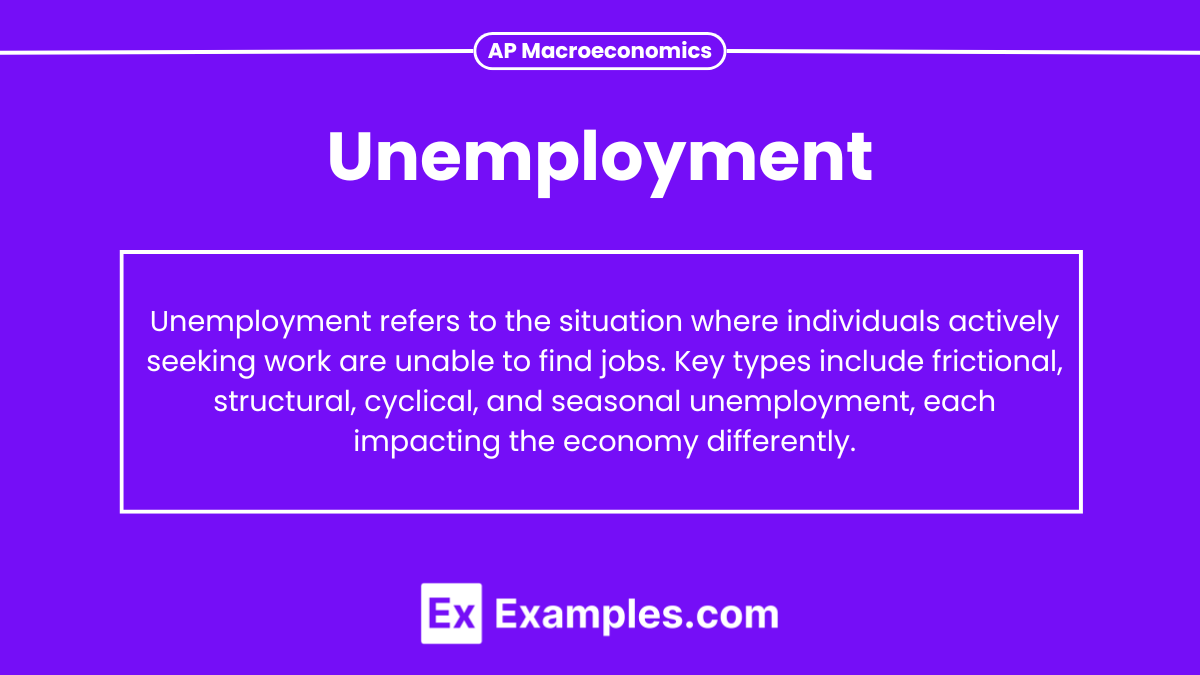Unemployment is a key concept in economics, reflecting the number of individuals actively seeking work but unable to find employment. It plays a crucial role in determining a country’s economic health. In AP Macroeconomics, understanding the different types of unemployment—frictional, structural, and cyclical—along with their causes and effects, is essential for analyzing economic performance and policy impacts.
Learning Objectives
Focus on understanding the various types of unemployment (frictional, structural, cyclical), how to calculate the unemployment rate, and the causes and effects of unemployment. You should also grasp the concept of the natural rate of unemployment and analyze the role of government policies in reducing unemployment during economic fluctuations.
Unemployment

Unemployment occurs when people who are actively looking for work are unable to find employment. It’s an essential indicator of economic health, often used alongside inflation and GDP to evaluate economic performance.
The unemployment rate is the percentage of the labor force that is unemployed, calculated by:
![]()
Types of Unemployment

1. Frictional Unemployment
- Definition: Short-term unemployment caused by the time it takes for workers to search for new jobs.
- Causes: Career changes, recent graduates entering the workforce, voluntary job transitions.
- Example: A worker leaving a job to find a better opportunity.
2. Structural Unemployment
- Definition: Unemployment resulting from a mismatch between workers’ skills and available jobs.
- Causes: Technological advancements, changes in industry demand, globalization.
- Example: Factory workers losing jobs due to automation.
3. Cyclical Unemployment
- Definition: Unemployment caused by economic downturns and reduced demand for goods and services.
- Causes: Recessions, reduced consumer spending, business layoffs.
- Example: Workers losing jobs during a recession.
4. Seasonal Unemployment
- Definition: Unemployment linked to seasonal variations in employment.
- Causes: Changes in weather, tourism, agriculture cycles.
- Example: Ski resort employees laid off during the summer.
Natural Rate of Unemployment (NRU)
The Natural Rate of Unemployment (NRU) is the unemployment rate that exists when the economy is at full employment, meaning that all unemployment is frictional and structural, not cyclical. The NRU is typically between 4-6%.
Full Employment vs. Unemployment
- Full Employment: Occurs when there is no cyclical unemployment, meaning the economy is operating at its potential GDP.
- Unemployment at Full Employment: Even at full employment, some frictional and structural unemployment remains, as the labor market is never perfectly efficient.
Causes of Unemployment
- Demand-Deficient (Cyclical) Unemployment: Occurs during recessions due to reduced demand for goods and services.
- Decreased production leads to layoffs.
- Technological Changes: Automation and technology can make certain jobs obsolete, causing structural unemployment.
- Globalization: Increased competition and outsourcing may shift jobs overseas, increasing structural unemployment in some sectors.
Costs of Unemployment
- Economic Costs:
- Lost output: Unemployed workers aren’t contributing to production, leading to a lower GDP.
- Government spending: Higher unemployment leads to increased government spending on welfare and unemployment benefits.
- Budget deficits: Unemployment reduces tax revenue and increases government debt.
- Social Costs:
- Poverty and inequality: Prolonged unemployment can lead to increased poverty and social inequality.
- Psychological effects: Unemployment can cause stress, depression, and loss of self-esteem.
The Phillips Curve

The Phillips Curve illustrates the inverse relationship between unemployment and inflation. According to the short-run Phillips Curve, when unemployment is low, inflation tends to be higher, and when unemployment is high, inflation tends to be lower. This is due to increased demand for goods and services in low-unemployment periods, which raises prices.
However, in the long run, the Phillips Curve becomes vertical, implying that no trade-off exists between unemployment and inflation in the long run, and the economy will settle at the natural rate of unemployment regardless of inflation.
How is Unemployment Measured?
1. Labor Force Participation Rate (LFPR):
- The percentage of the working-age population that is part of the labor force (working or actively seeking work).
- Formula:

2. Unemployment Rate (U3):
- The standard measure of unemployment, calculated as the percentage of the labor force that is unemployed and actively seeking work.
3. U6 Measure:
- A broader measure that includes discouraged workers and those working part-time for economic reasons.
Policies to Reduce Unemployment
Governments use several policies to reduce unemployment, especially cyclical and structural unemployment:
1. Monetary Policy:
- The central bank (Federal Reserve) may lower interest rates to encourage borrowing and investment, thereby boosting demand and reducing unemployment.
2. Fiscal Policy:
- Governments can increase spending (e.g., infrastructure projects) or cut taxes to stimulate demand and create jobs.
3. Job Training and Education Programs:
- These programs help reduce structural unemployment by providing workers with the skills needed for new jobs in changing industries.
4. Unemployment Benefits:
- Temporary financial support for unemployed individuals to prevent poverty and help them find new jobs.
Examples
Example 1: Factory Layoffs During a Recession
During an economic downturn, reduced consumer spending leads to lower production, causing factories to lay off workers, resulting in cyclical unemployment.
Example 2: Retail Workers After Holiday Season
Retail employees hired for the holiday shopping season often face layoffs once demand drops, creating seasonal unemployment after peak periods.
Example 3: Recent Graduates Job Searching
College graduates entering the job market may take time to find suitable employment, experiencing frictional unemployment as they transition from school to work.
Example 4: Coal Miners After Shift to Renewable Energy
Coal miners lose jobs due to the transition to cleaner energy sources, leading to structural unemployment as their skills are no longer in demand.
Example 5: Construction Workers in Off-Peak Months
Construction workers may face seasonal unemployment during winter months when weather conditions prevent certain projects from continuing.
MCQs
Question 1
Which type of unemployment is caused by a mismatch between workers’ skills and job requirements?
A) Frictional Unemployment
B) Structural Unemployment
C) Cyclical Unemployment
D) Seasonal Unemployment
Answer: B) Structural Unemployment
Explanation: Structural unemployment occurs when workers’ skills are no longer aligned with available jobs due to technological changes or shifts in the economy.
Question 2
What does the Phillips Curve illustrate in the short run?
A) The relationship between interest rates and GDP
B) The inverse relationship between unemployment and inflation
C) The direct relationship between wages and productivity
D) The trade-off between unemployment and government spending
Answer: B) The inverse relationship between unemployment and inflation
Explanation: In the short run, the Phillips Curve shows that lower unemployment typically results in higher inflation and vice versa.
Question 3
Which of the following is an example of frictional unemployment?
A) A worker laid off during a recession
B) A college graduate searching for their first job
C) A farmworker unemployed during the winter months
D) A factory worker replaced by automation
Answer: B) A college graduate searching for their first job
Explanation: Frictional unemployment occurs when individuals are temporarily unemployed while transitioning between jobs or entering the workforce for the first time.


